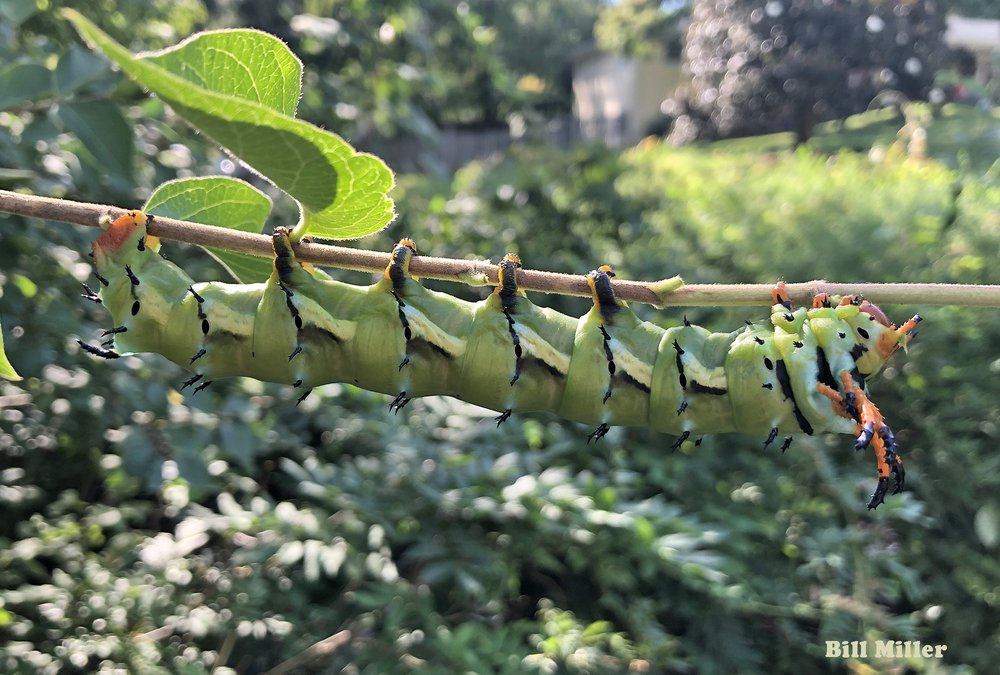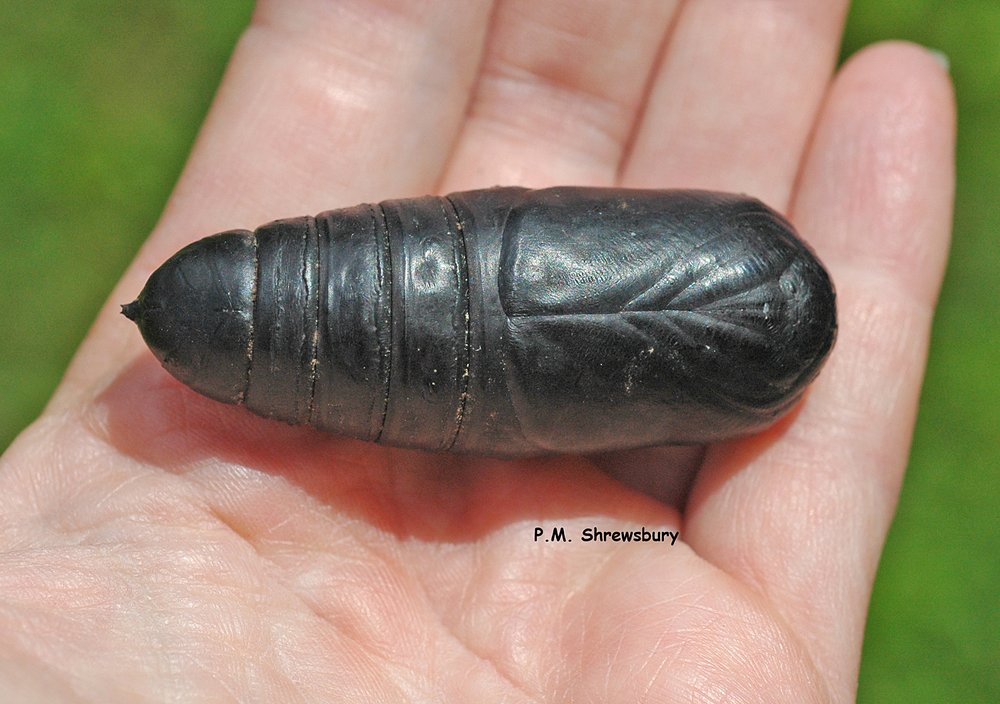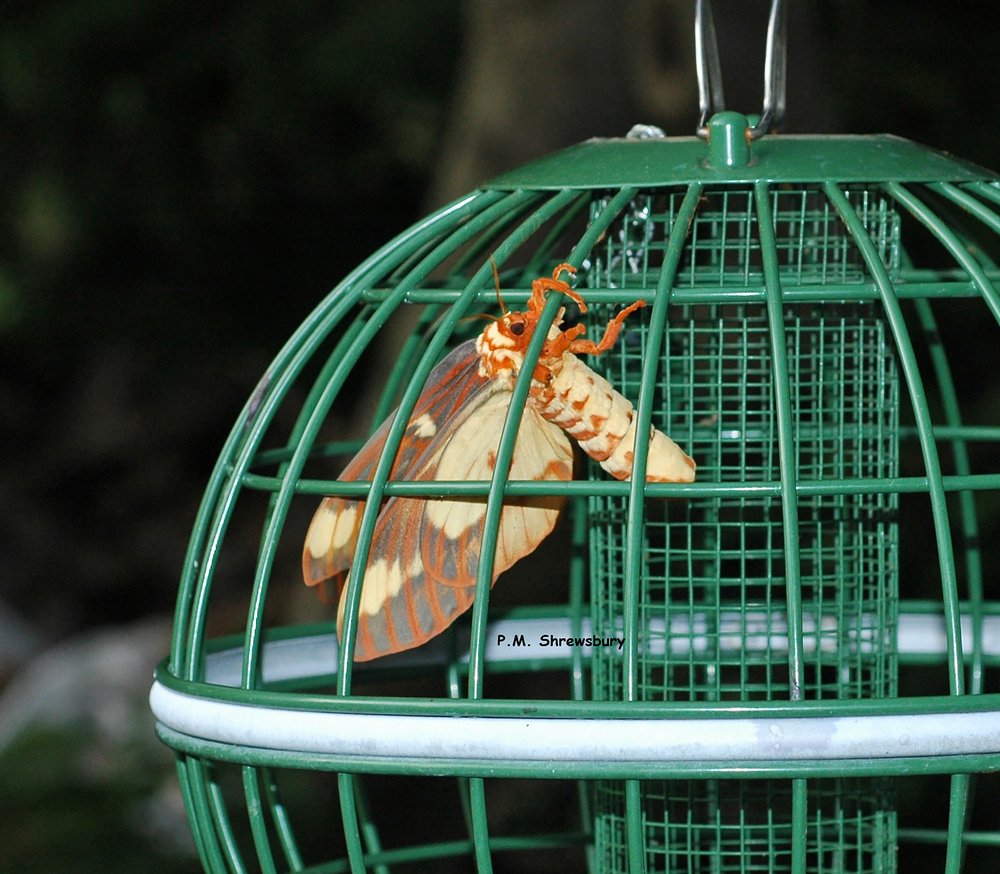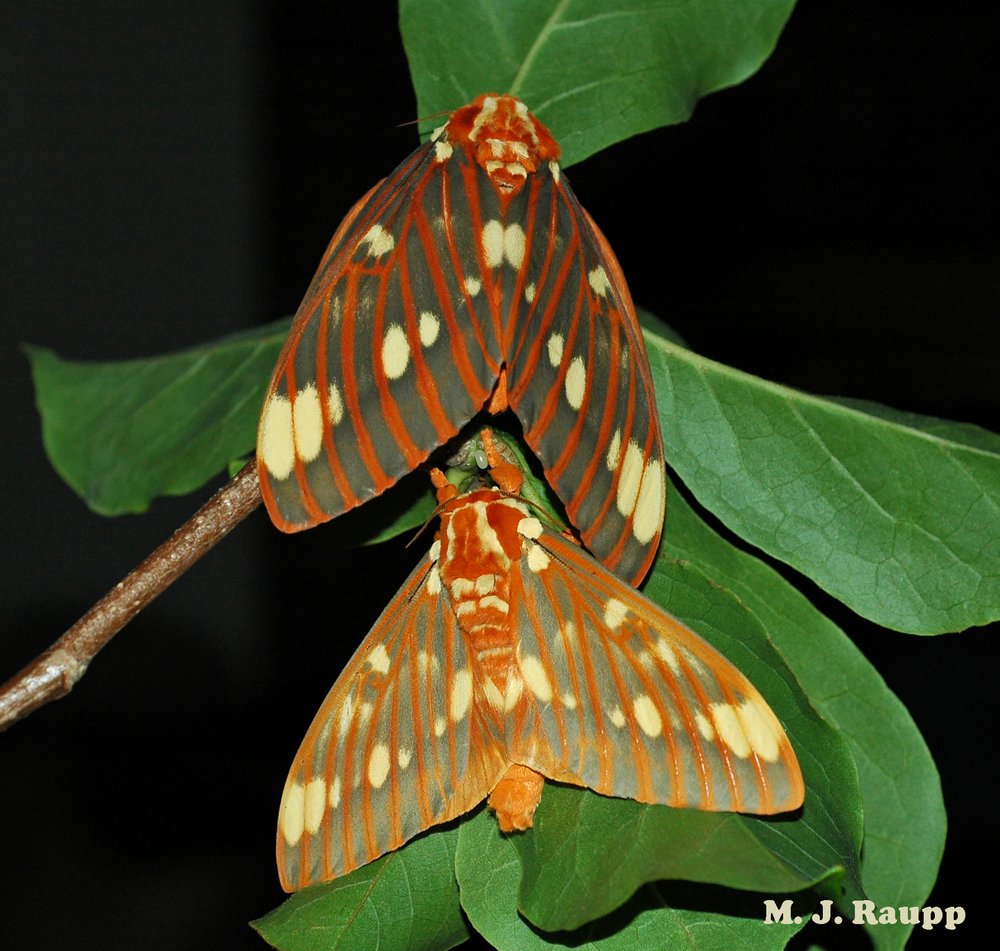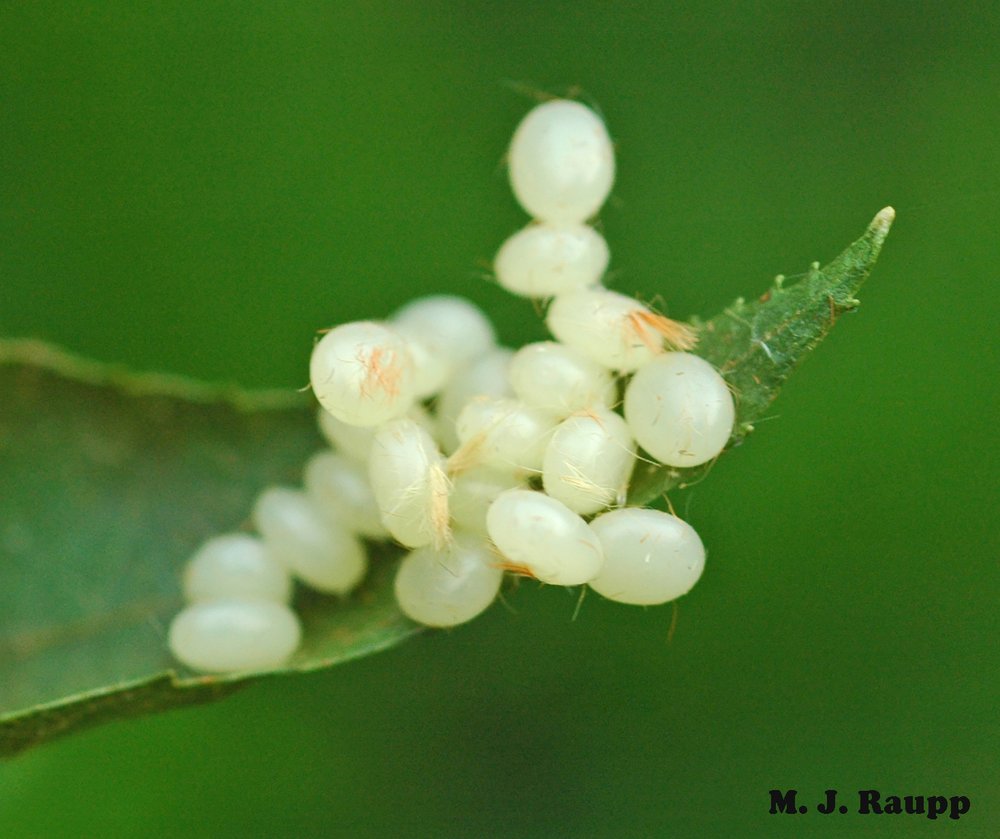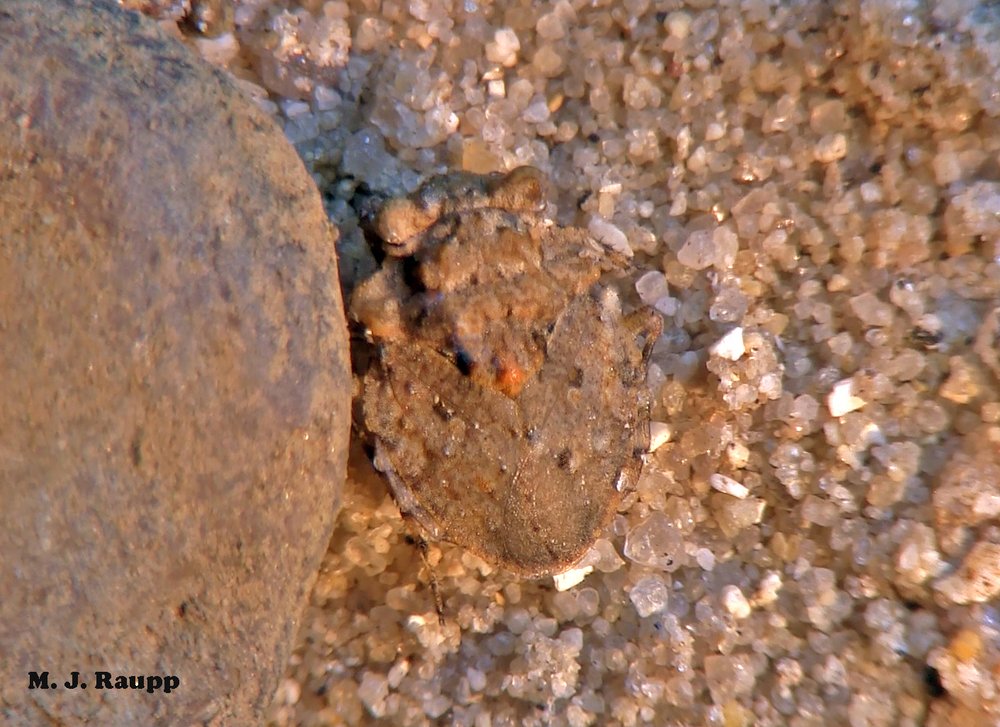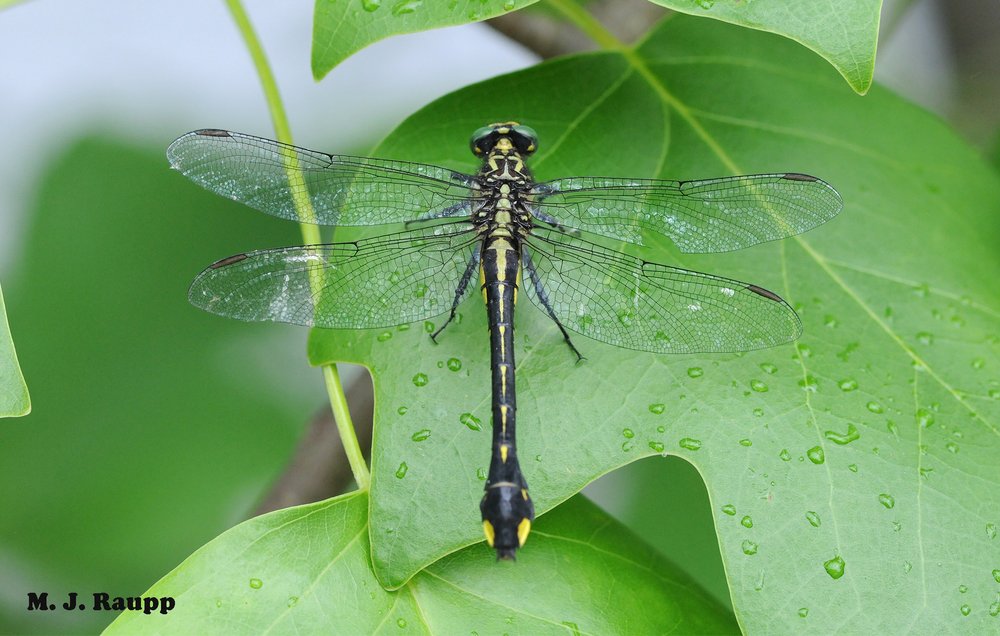
Gorgeous Cobra Clubtails often rest with wings widespread on trees near their riverine hunting grounds.
The sleepy rivers and streams flowing in the Cacapon watershed in West Virginia’s panhandle are home to a rich bounty of plants and animals. Along creeks, ponds, and moist forest edges, blades of white cutgrass and bottle brush grass provide nutrition for caterpillars of the pretty pearly-eye butterfly. Adult pearly-eyes cruise verdant forest glens in search of sap-fluxes on trees and deposits of animal dung, from which they harvest proteins and carbohydrates used to develop eggs and to provide energy to search for just the right vegetation on which to deposit eggs. But for pearly-eyes, danger lurks along the creek banks and pond edges in the form of fearsome aerial hunters, clubtail dragonflies.
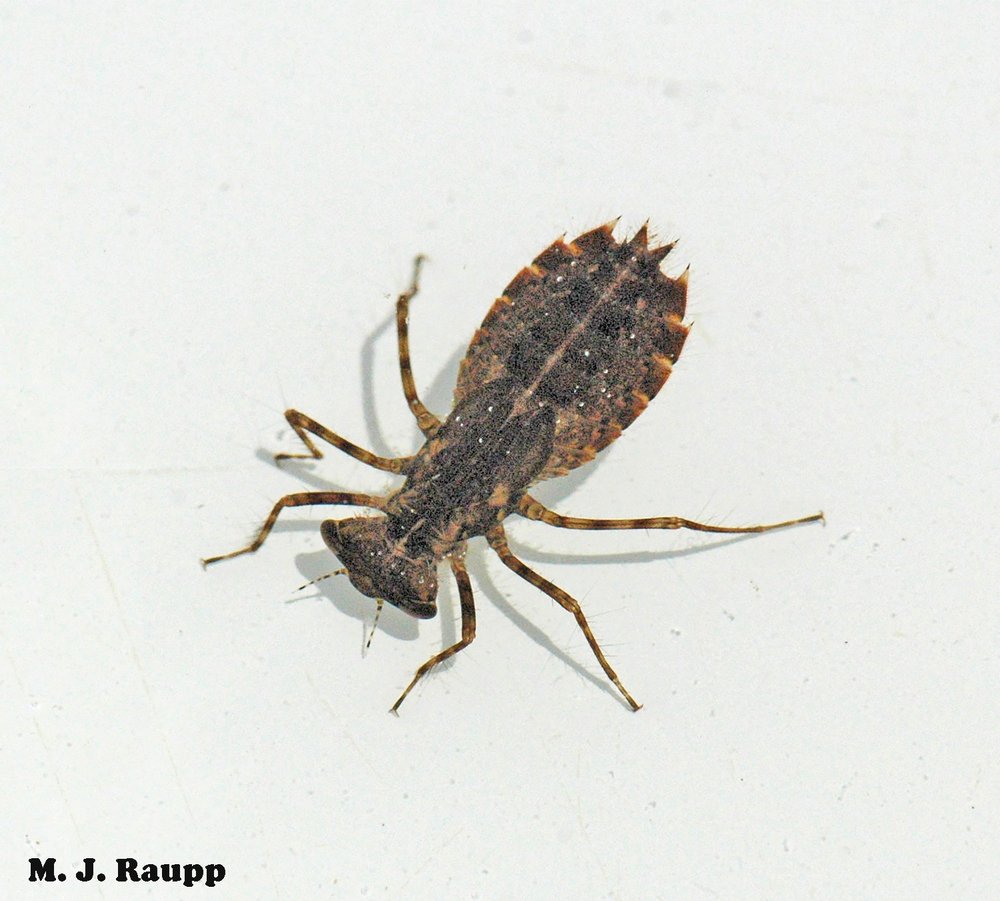
While living the life aquatic, fierce dragonfly nymphs consume untold numbers of mosquito larvae.
Dragonflies belong to an ancient order of insects called the Odonata that evolved some 300 million years ago. Both adult and juvenile Odonata are predators. Dragonfly nymphs live the life aquatic, prowling slow moving creek beds and ponds searching for aquatic invertebrates like mosquito larvae, and even small vertebrates like tadpoles and small fish. In a previous episode, we saw the lightning fast strike of dragonfly nymphs as they captured and ate unsuspecting mosquito wigglers. Dragonfly nymphs have been touted as providing significant reductions in mosquito populations around the world. Adult Odonata are familiar to most of us and go by the common names of dragonflies and damselflies. More than 6,000 species of dragonflies and damselflies have been described.
Dragonflies are masters of the aerial hunt and capture their victims while on the wing. Legs festooned with stout spines are held basketlike beneath the dragonfly as it zooms through the air. Prey such as moths, butterflies, bees and sometimes other Odonata are captured in the basket. Does eating your near relative somehow seem so wrong? One large and particularly aggressive clubtail dragonfly, Hagenius brevistylus, is nicknamed the dragonhunter due to its Hannibal Lecter-like propensity to eat other dragonflies and damselflies. Dragonflies often consume their prey while in flight. When not in flight, meals are enjoyed on vegetation or stones, as is the case with the clubtail we meet in this episode.
Northern pearly-eye butterflies are common denizens of riparian forests in the eastern United States. They rest on vegetation and tree trunks. But when in flight, they are hunted by fierce aerial predators, clubtail dragonflies. Watch as a clubtail chows down on a hapless pearly-eye butterfly. Clubtails show no kinship loyalty when it comes to dining. This one is happy to feast on an unlucky damselfly.
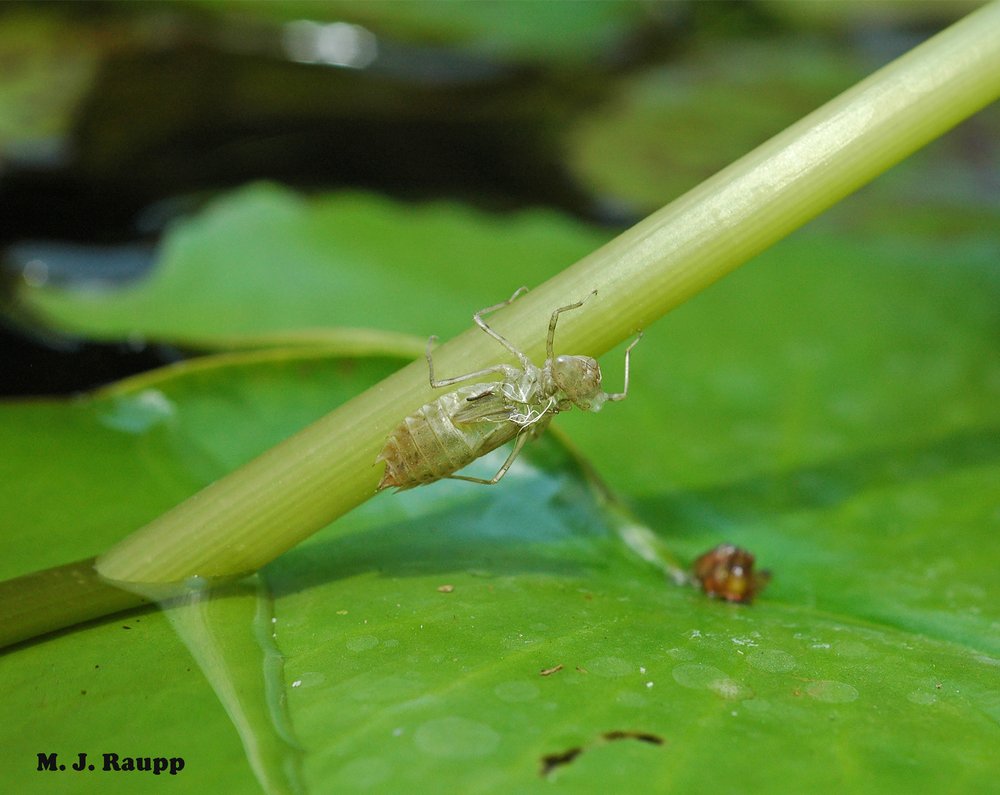
Dragonfly nymphs exit their aquatic nursery, climb vegetation, and shed juvenile skins to become aerial hunters in the world above the water.
Many species of dragonflies reside year-round in the DMV and spend the winter underwater as juveniles. Others, like the common green darner, migrate to southern realms in autumn to avoid winter’s chill and return north the following year. In fact, dragonflies are contenders for the world record of longest insect migration. Pantala flavescens, the “winged wanderer”, is thought to cross oceans and continents with migratory flights of more than 10,000 miles in search of exactly the right pool of water in which to deposit eggs. In the waning days of summer, enjoy these magnificent predators that roamed our skies millions of years before the first dinosaurs walked the earth.
Acknowledgements
“Dragonflies as an Important Aquatic Predator Insect and Their Potential for Control of Vectors of Different Diseases” by Hassan Vatandoost, “Tiny dragonfly shatters insect migration record-Insect traverses oceans and continents” by Virginia Morell, and “Beginners guide to dragonflies” by Blair Nikula, Jackie Sones, and Donald and Lillian Stokes were consulted to prepare this episode.
